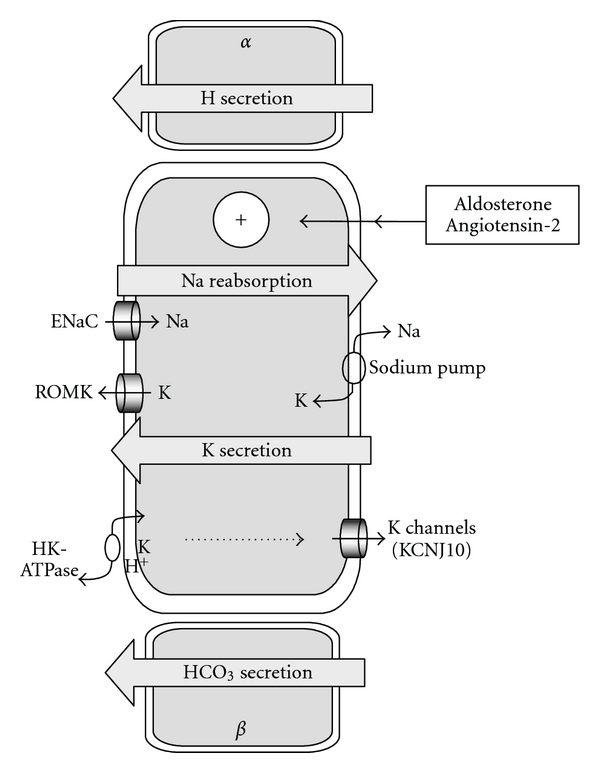Figure 3.

Activation of the principal cell of the collecting duct by aldosterone and angiotensin-2. The collecting duct is a composite structure made of 3 types of cells: the principal cell that assumes sodium and water reabsorption and potassium secretion, the α-intercalated cell dedicated to hydrogen secretion, and the β-intercalated cell dedicated to bicarbonate secretion. In the principal cell, the reabsorption of sodium is vectorized through the epithelial sodium channel at the apical side of the principal cell and the sodium pump at the basolateral side. Potassium ions are cross-transported against sodium ions by the sodium pump and secreted in the lumen by the ROMK channel that is the same ROMK channel expressed in the Henle loop. Chronic sodium depletion and the subsequent extracellular volume contraction lead to an activation of the renin-angiotensin2-aldosterone axis that leads to the enhancement of sodium reabsorption and an exacerbated cross-secretion of potassium by the principal cell. The subsequent potassium depletion leads to hypokalemia and likely induces the expression of the gastric proton-potassium pump (inhibited by omeprazole) at the apical face of the principal cell leading to an excessive secretion of hydrogen and a subsequent alkalosis [18].
